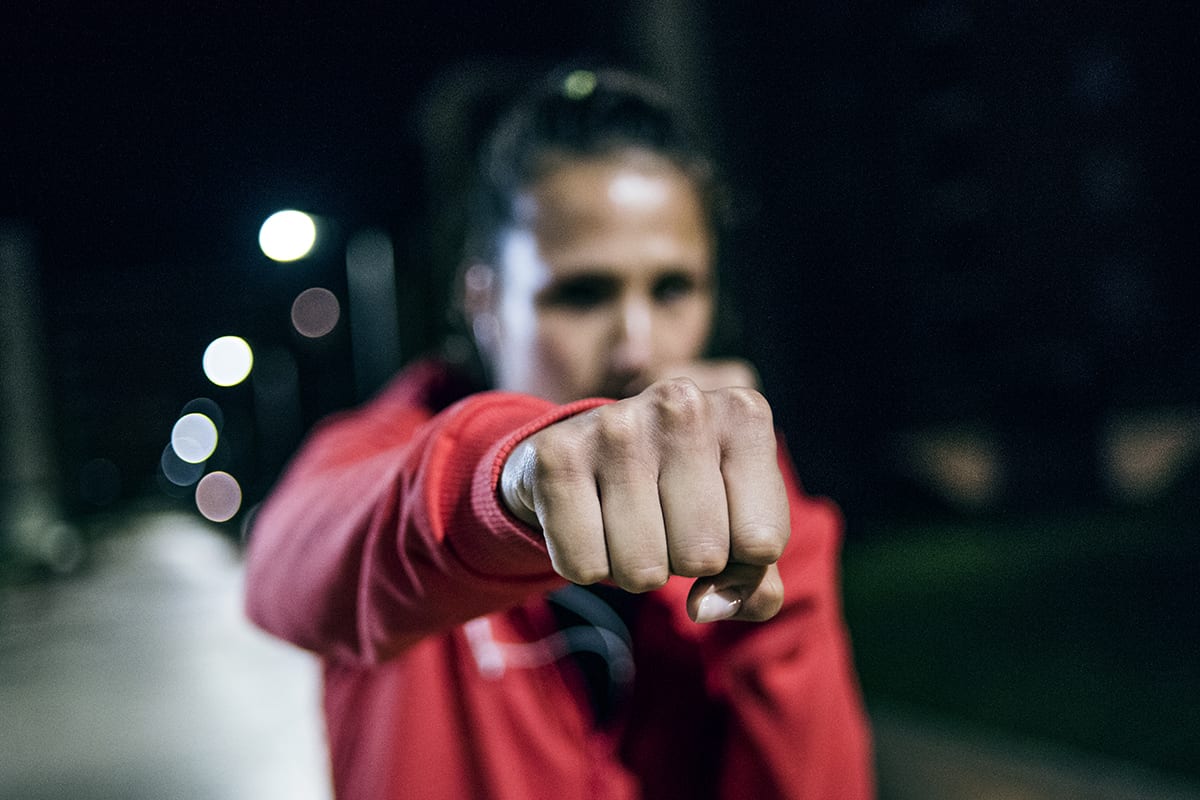Building self-defense skills doesn’t always necessitate expensive gadgets or formal training. In fact, the journey toward personal safety and empowerment often begins with resourcefulness and a willingness to learn. The quest for self-protection transcends costly equipment, inviting us to explore accessible, practical methods that fortify our ability to navigate uncertain situations. By embracing a mindset of adaptability and acquiring fundamental techniques, individuals can elevate their confidence and readiness, ensuring a proactive approach to personal safety without straining their wallets.
While hoping for the best in any situation, it is also prudent to prepare for the worst. Of course, there isn’t an attacker lurking around every corner or in every parking garage. Often the situations which may seem scary are heightened by shadows, silence, noise, desertedness, etc. Attacks do happen, though, and it is a good idea to know how to defend yourself should it come down to it.
No matter which bad situation — such as a mugging, stalking, downright assault or worse — you may be trying to guard against, the truth is that a little preparation and awareness can go a long way. That’s why you don’t necessarily need to buy expensive self-defense tools or spend lots of money on advanced training. While those options are excellent for those who can afford them time- and money-wise, they may not be options for everyone.
So, to help you prepare for future situations, here are many ways building self-defense skills can be achieved without breaking the bank for expensive tools or training.
Consider Time and Place
A lot of the time, good self-defense is actually about defending against any potential threat before it has the chance to occur. For example, here are just a few general tips and how to navigate situations involving each:
Well-lit walking. Try to stay along well-lit areas of a street where people can see you.
Don’t wander. Walk confidently, as if you have a definite intent and location that you’re trying to reach. Wandering around looking lost will only increase the confidence of any potential attacker.
Phone in hand. If it is a particularly bad area or something feels off, try walking with a phone in your hand, with 9-1-1 already pressed, so in the case of an emergency you can just press the call button.
Keys between fingers. Keys in your other hand, with the keys sticking through like Wolverine’s blades, are also a good protective measure if things ever did become physical.
Avoid certain locations. If possible, avoid all alleys, walking under overpasses and any other places where people walking by might not be able to see you.
Distractions. When walking, especially alone at night, don’t distract yourself from any dangerous surroundings by putting in headphones and becoming oblivious to what is around you. Keep your eyes and ears open.
Discard Embarrassment
It may seem like a pretty basic tool to have, but screaming is actually an excellent and highly effective tool. Many people may not want the embarrassment that comes with screaming, but it really may just save your wallet, your body or your life. If someone is bothering you, don’t be afraid to scream (it’s actually one of the most basic – and cheapest way for building self-defense skills). The catch is that some screams will draw more attention than others (it is a horrible fact, but true). A loud “help!” may be misconstrued as playing around. Instead of screaming “help,” try screaming “fire!” and then many more people will look to you to see where the danger is. Once they have their eyes on what is happening just throw out any embarrassment you may be feeling in order to get to safety again. Also, many attackers will be less enthused by someone willing to fight back and draw attention. So, shed the embarrassment and give a good loud yell if need be.
Have Go-To Physical Moves
As promised, none of these physical moves will be advanced or difficult to pick up at all. If your adrenaline is racing and you aren’t sure what to do, just remember building self-defense skills. For those who want to research martial arts and self-defense, a more detailed Google search can provide many useful tips and reviews on the topic.
Stay out of reach. If someone is following you, approaches you or tries to grab you, stay out of their reach. Never let someone walk up to you and get within grabbing distance. If someone approaches you and wants to get closer, you can sidestep them or back step, but never take your eyes off of them. This may be more difficult if there are many attackers, but definitely worth doing if only dealing with one.
Kick them where it hurts. If the person you’re defending against is a man, then they have a particularly vulnerable region within kicking distance. It may seem mean (and you should never do it under any other circumstances as it can cause severe pain and even injury), but the safety of your body comes first. Just make sure to kick as hard as you can, then step back so they can’t grab you as they go down.
Go for the eyes or nose. In an emergency self-defense situation where someone has already grabbed you and you are in close-range with them, then go for the eyes. If you’re facing them then you can jab precisely where it is most likely to hurt them and run. If they are holding you in front or from behind, consider headbutting their face, which will likely cause damage to their nose. When they drop their grip due to pain then it’s your turn to run.
In the pursuit of building self-defense skills without relying on pricey tools or formal instruction, the essence lies in empowerment through knowledge and practice. Embracing a resourceful mindset and consistently honing basic techniques cultivates a sense of confidence and preparedness. Remember, the most valuable tools for self-defense are the ones ingrained within oneself: awareness, adaptability, and a proactive mindset. By nurturing these qualities, individuals can navigate their environments with a newfound assurance, ensuring their safety without the constraints of financial barriers. Ultimately, the journey towards self-defense is a continuous evolution of skills and mindset, allowing everyone to embrace their innate capacity for protection and resilience.








